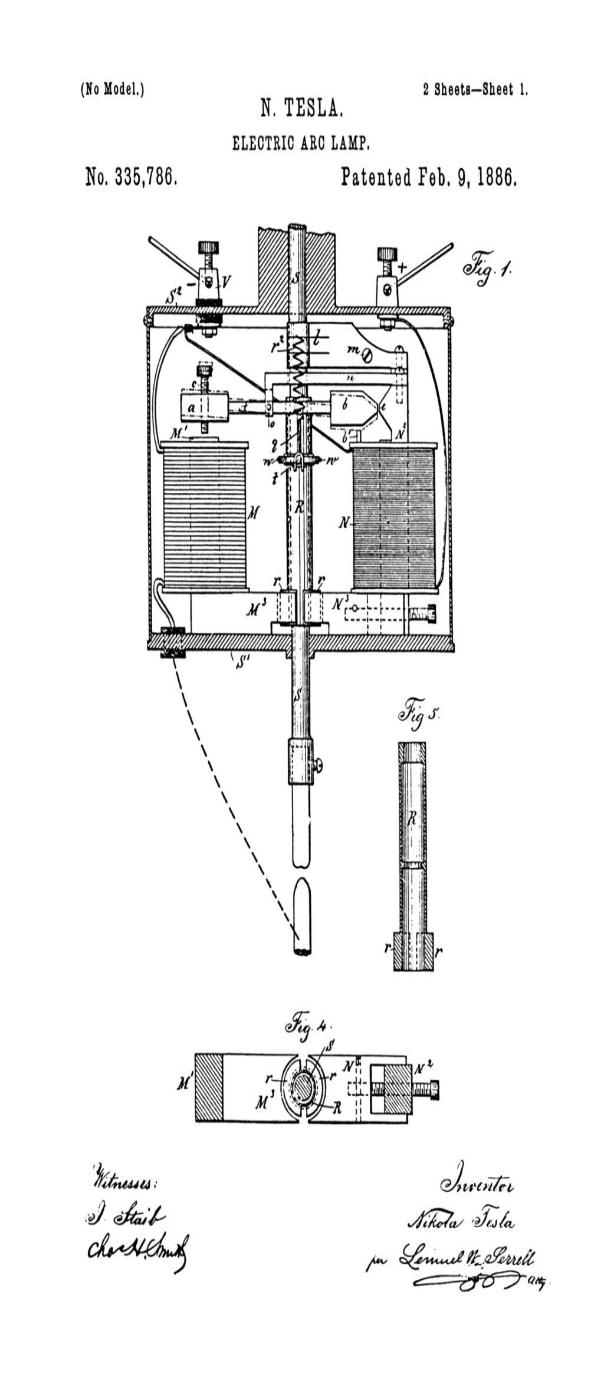April 2, 2025
Nikola Tesla’s first-ever patent application was filed 140 years ago, on March 30, 1885, for an electric arc lamp (which later became US Patent 335,786 A, granted on February 9, 1886).
This came shortly after he left Edison to found his own company, Tesla Electric Light & Manufacturing.

An electric arc lamp produces light by creating an arc between two electrodes.
This type of lamp was brighter and more efficient than the gas lamps commonly used at the time, making it ideal for street lighting and industrial use.
Tesla’s version of the electric arc lamp was more advanced than previous designs.
It included an automatic regulator that made the lamp more efficient and long-lasting, reducing the need for frequent adjustments.
He was a prolific inventor, he held at least 311 patents across 27 different countries, with 112 patents registered in the United States.
Some of his most important inventions include: The polyphase system; The rotating magnetic field; The asynchronous & synchronous motors; The Tesla coil and, of course, his AC power system, which played a key role in the first hydroelectric power plant at Niagara Falls.
Tesla conducted early experiments with X-rays and radiation. He developed some of the first X-ray images, recognizing their medical potential.
In 1898, Tesla introduced the first-ever remote-controlled boat, demonstrating radio-controlled robotics long before such technology became mainstream.
His work laid the foundation for today’s drones and automated systems.
He remains the only Serb to have an international unit of measurement named after him—the tesla (T), the unit for magnetic flux density.
Nikola Tesla’s Museum in Belgrade, Serbia
The Nikola Tesla Museum was founded on December 5, 1952, in the building, originally designed by architect Dragiša Brašovan and declared a cultural monument in 1987.
However, big changes are coming as the museum is set to move to the old Thermal Power Plant building, providing more space to properly showcase the legacy of one of the greatest minds of the 20th century. However, not everyone agrees with the move.
Some experts believe that the current location in the city center is the best place for Tesla’s Museum. However, others support the relocation, arguing that the old Thermal Power Plant has a symbolic connection to Tesla’s work in energy and electricity.
The new location isn’t just about exhibition space—it also opens up opportunities for commercial content that could make the museum financially self-sustainable. Whether the move is for better or worse, one thing is certain—Tesla’s legacy will continue to inspire future generations as Nikola Tesla wasn’t just an inventor; he was a true genius ahead of his time.